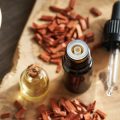Understanding the Difference: Hair Dye vs. Eyebrow Tint
When considering whether you can use hair dye for eyebrow tinting, it’s crucial to first understand the significant differences between hair dye and products specifically formulated for eyebrows. While both products may appear similar at a glance, their ingredient profiles, intended uses, and safety standards are quite distinct. Traditional hair dyes are designed for scalp hair, which is generally coarser and less sensitive than the delicate skin around your eyes. These formulas often contain stronger chemicals like ammonia and higher concentrations of peroxide to effectively penetrate and color thicker hair strands. In contrast, eyebrow tints are developed with gentler ingredients to accommodate the thinner, more sensitive nature of brow hairs and the surrounding skin. Additionally, eyebrow tinting products must meet stricter safety regulations due to their proximity to your eyes—a highly sensitive area prone to irritation or even serious injury if exposed to harsh chemicals. Understanding these key differences helps highlight why using regular hair dye on your brows is not as straightforward as it might seem and sets the stage for weighing the pros and cons of this beauty shortcut.
Pros of Using Hair Dye for Eyebrow Tinting
When it comes to eyebrow tinting, many people are tempted to use regular hair dye as a DIY alternative. This approach is gaining traction among beauty enthusiasts for a few key reasons. Below, we break down the main advantages of using hair dye for eyebrow tinting, focusing on cost savings, color variety, and convenience—three factors that resonate strongly with American consumers seeking both value and personal expression.
Cost Savings
Professional eyebrow tinting services at salons can add up over time, especially if you prefer frequent touch-ups to keep your brows looking fresh. By using hair dye at home, you can significantly cut costs. Most drugstore hair dyes are priced between $7 and $15 per box, and each box contains enough product for multiple uses—not just for your head but also for several brow applications. Here’s a quick comparison:
| Salon Brow Tinting (per session) | Box Hair Dye (multiple uses) | |
|---|---|---|
| Average Cost | $20 – $40 | $7 – $15 |
| Number of Uses | 1 | Up to 10+ |
Color Variety
If you’ve ever felt limited by the shade options available for eyebrow-specific tints, hair dye opens up a whole new world of possibilities. Hair dye brands typically offer a broader spectrum of shades—from warm honey blondes to deep espresso browns and even unconventional colors like blue or purple. This is particularly appealing for individuals who want to match their brows exactly to their hair color or experiment with bold looks.
Convenience and Accessibility
The accessibility of hair dye is another major plus. You can find it in virtually any supermarket or pharmacy across the U.S., making last-minute brow touch-ups easy and convenient. No appointments necessary—just pick up your preferred shade during your regular grocery run and tint your brows at home whenever it fits your schedule.
Summary Table: Key Advantages
| Advantage | Description |
|---|---|
| Cost Savings | Dramatically reduces expenses compared to salon visits |
| Color Variety | Offers more shades than traditional brow tints |
| Convenience | Easily accessible, no need for appointments or special orders |
These benefits make using hair dye for eyebrow tinting an attractive option for budget-conscious individuals and those who crave creative control over their look. However, while these pros may be compelling, its important to weigh them against potential risks and limitations before making the switch.
![]()
3. Risks and Cons: Why Caution Matters
When considering whether to use traditional hair dye on your eyebrows, its crucial to weigh the risks and understand why many beauty professionals urge caution. The skin around your eyes is far more delicate than your scalp, making it particularly vulnerable to irritation, chemical burns, and allergic reactions. Hair dyes are formulated for thicker scalp skin and hair, not the sensitive facial area. Direct contact with these chemicals can lead to redness, swelling, or even long-term skin damage.
Eye Safety Concerns
The proximity of your brows to your eyes amplifies the danger. Even a small amount of hair dye accidentally entering the eye can cause severe irritation, vision problems, or permanent injury. In fact, most hair dye packaging in the U.S. specifically warns against use near the eyes for this reason. Unlike professional eyebrow tints, at-home hair dyes lack formulation safeguards for facial application, putting you at significant risk if misused.
Unnatural Results
Aside from health concerns, using standard hair dye on brows often leads to unnatural results. The pigments in scalp dyes are typically stronger and less nuanced than those designed for facial hair. This can result in overly harsh, oddly colored, or patchy brows that don’t blend well with your natural features—certainly not the subtle enhancement most people are seeking.
Regulatory Issues in the U.S.
Finally, there are important regulatory considerations. The Food and Drug Administration (FDA) has not approved any color additives for use in tinting eyebrows or eyelashes due to safety concerns. Using products off-label for brow tinting may violate local salon regulations and can void product liability claims in case of injury. This regulatory gap means consumers need to be extra vigilant about what they’re applying so close to their eyes.
4. Expert Opinions: What Derms and Stylists Say
When it comes to using traditional hair dye for eyebrow tinting, American dermatologists and professional stylists share some strong opinions based on both safety and aesthetic outcomes. Their expert perspectives are crucial for consumers weighing the risks and rewards of this growing beauty trend.
Dermatologists: Medical Cautions
Dermatologists across the United States generally caution against using scalp hair dye on eyebrows. According to Dr. Lisa Brown, a board-certified dermatologist in New York City, “The skin around the eyes is thinner and more sensitive than the scalp, making it more prone to irritation, allergic reactions, and even chemical burns.” The American Academy of Dermatology (AAD) also notes that many hair dyes contain ingredients like ammonia and peroxide, which can cause contact dermatitis or more severe issues if they enter the eyes.
Professional Stylists: Artistic and Practical Concerns
On the stylist side, professionals agree that while hair dye can technically color brow hairs, it’s not formulated with facial use in mind. Celebrity brow artist Michelle Evans from Los Angeles explains, “Eyebrow-specific tints are designed to deliver softer results that look natural with facial features. Scalp dyes often produce harsher colors and may leave uneven results on brows.” Stylists emphasize the importance of precise color matching and gentle formulas when working near the eyes.
Dermatologist vs. Stylist Perspectives at a Glance
| Expert Type | Main Concern | Key Recommendation |
|---|---|---|
| Dermatologist | Skin & Eye Safety | Avoid scalp dyes; use products labeled safe for facial use |
| Stylist | Aesthetic Results & Application Precision | Choose brow-specific tints for best color and shape control |
The Bottom Line from Experts
Both dermatologists and stylists agree: while DIY solutions may seem tempting for convenience or cost, the potential risks outweigh the benefits when it comes to using regular hair dye on your eyebrows. For a safe and attractive outcome, they recommend opting for professional-grade brow tints or seeking help from a licensed esthetician or brow specialist.
5. Best Practices for At-Home Eyebrow Tinting
If you’re considering tinting your eyebrows at home, it’s crucial to prioritize safety and effectiveness—especially in the U.S., where beauty trends meet strict personal care standards. Here are some best practices and alternatives to using traditional hair dye for brow tinting:
Choose a Brow-Specific Tint
Opt for products specifically formulated for eyebrow use. These tints are designed with gentler ingredients that are less likely to irritate delicate facial skin or cause allergic reactions. Popular brands available at U.S. drugstores and online include Godefroy, Just For Men (beard & mustache formulas), and Ardell. Always read reviews and check for FDA compliance when shopping for these products.
Perform a Patch Test
Before applying any tint—even those labeled “safe” or “natural”—conduct a patch test 24-48 hours in advance. Apply a small amount of product on your inner arm or behind your ear, then monitor for redness, itching, or swelling. This step is non-negotiable and helps prevent adverse reactions around your eyes.
Follow Instructions Carefully
Each brow tint kit comes with its own set of instructions regarding application time, mixing ratios, and removal methods. Stick closely to these guidelines to avoid over-processing, staining the skin, or achieving an unnatural color result. Set a timer—don’t guess!
Tools You’ll Need
- Brow brush or spoolie
- Petroleum jelly (to protect skin around brows)
- Cotton swabs/Q-tips (for quick clean-up)
- Damp washcloth or makeup remover pads
Application Tips
- Start with clean, dry brows free from oils and makeup.
- Apply petroleum jelly around the brow area to prevent staining the skin.
- Use precise strokes with a fine brush for even coverage.
- Remove excess tint quickly if it strays outside your desired shape.
Safe Alternatives to Hair Dye
If you want temporary results or are concerned about sensitivities, consider tinted brow gels or powders. These products offer instant color without commitment or harsh chemicals and have become increasingly popular among American consumers seeking low-maintenance solutions.
The Bottom Line
Tinting your eyebrows at home can be safe and effective when you choose the right products and follow best practices. Avoid regular hair dye due to its harsher chemical composition, and invest in brow-specific formulas instead. With careful application and attention to safety, you can achieve natural-looking results that align with current U.S. beauty standards.
6. Final Verdict: Is It Worth the Risk?
When it comes to using hair dye for eyebrow tinting, the answer is not black and white. While some American beauty enthusiasts appreciate the convenience and cost-effectiveness of repurposing hair dye, there are significant safety concerns that cannot be ignored. On one hand, DIY methods reflect a broader trend toward at-home beauty solutions, fueled by social media hacks and a desire for budget-friendly alternatives. However, federal regulations—such as those from the FDA—explicitly warn against using traditional hair dyes near the eyes due to potential allergic reactions, skin irritation, and even more severe health risks.
Consumer behavior in the U.S. shows a growing awareness of ingredient safety and a shift toward products formulated specifically for sensitive areas like eyebrows. Professional-grade brow tints are increasingly accessible and often deliver more predictable, longer-lasting results than hair dye. While it’s tempting to take shortcuts, most American salons refuse to use scalp hair color on brows, reinforcing industry best practices and liability concerns.
Ultimately, the pros of convenience and affordability rarely outweigh the cons of potential side effects and regulatory issues. If you’re set on tinting your brows at home, investing in products designed for eyebrows is a safer bet that aligns with both current consumer habits and industry standards. In summary: while you technically can use hair dye for eyebrow tinting, American trends, regulations, and expert recommendations strongly suggest it’s not worth the risk.


